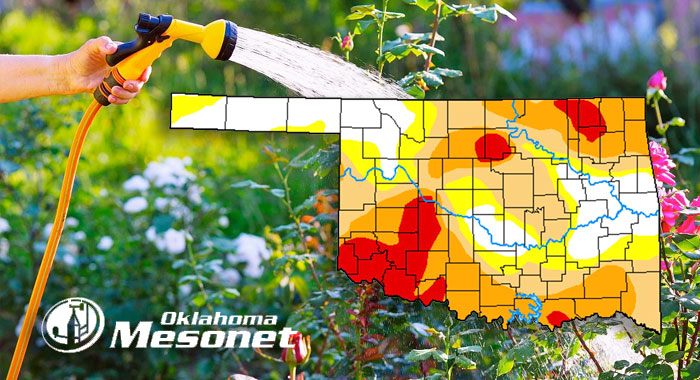Is 2024 a Down Year for Monarchs?
Northern weather creates trickle as Southwest drought worsens
October 5, 2024

BY KELLY BOSTIAN
___________________
A peculiar migration year for monarchs is dashing the hopes of butterfly watchers.
The 2023 migration saw the second-lowest overwintering populations of butterflies since records began in 1995. Fears are growing that 2024 could be worse.
The first half of October is supposed to be busy as the iconic butterflies funnel through Oklahoma toward central Mexico from a broad northern area that stretches from the Dakotas to Pennsylvania.
Last week's expected push with northerly winds was a let-down. Comparatively few butterfly spotters reported roosts, matching a trend of fewer roosts reported in northern states as well.
Meanwhile, people in Minnesota reported monarchs hanging around their flower gardens later into the season than they can remember, but Friday brought reports of hundreds reaching the Mexico border as well.
A longtime national expert said it’s a story that should make people sit up and notice.

Local specialists pray for a mid-month or late boost and say Oklahomans need to water their flower beds and continue to plant late-blooming flowers so the late arrivals have a prayer against an increasing drought.
“We’ve got to be aware of what is changing, and we can see that with monarchs,” said Monarch Watch founder Chip Taylor, ecology and evolutionary biology professor emeritus at the University of Kansas. “It’s one of the reasons they are so valuable. They can tell us about things going on around us, even if we’re not paying much attention.”

Officially retired, Taylor blogs about monarch migration progress for the university-based monarch research and education project, and his butterfly studies continue.
Drought across the southwest hit the migrating population hard in 2023. While prospects appeared good for recovery early this year, the weather again challenges the population, and the migration is unusual.
Taylor said a key is understanding the butterflies' stepping-stone generational nature. Spring migrators fly north to Texas and Oklahoma to lay eggs that give rise to a relatively short-lived first generation, which emerges ready to continue the trip north and lay about 200 eggs each in a lifespan of only four or five weeks.
Second- and third-generation monarchs continue that cycle. Fourth-generation monarchs are the long-lived migrators. They’re typically larger to store fats and endure the migration to the mountains of south-central Mexico and have a long life. They congregate in great roots and rest in sexual diapause until they fly north to reproduce the following spring.
Taylor said that the first returners showed promise this spring. Reproduction across Texas and Oklahoma went well. However, prolonged periods of heavy rain across the Midwest took a toll on second and third generations.
“Every generation is a stepping stone, and every stage has to be better than the previous one to make gains,” he said. “This looks like a down year.”
He said a female will lay about 200 eggs, and caterpillars from the eggs rely on milkweeds to grow. But egg-laying is on a set schedule, no matter the conditions. A female lays 30 or 40 eggs daily for four or five days. Once the process begins, it does not stop. She has 24 hours to regain energy and produce 30 or 40 more eggs.

Widespread, extended periods of heavy rain, as the Midwest saw in June and July, leave monarchs sheltered in protected areas when they need to be feeding, finding milkweed, and laying eggs.
“Once it starts, she can’t get those eggs back,” Taylor said.
He said that in addition to the spotty reproduction, warm weather is delaying many migrants, and drought conditions are again worsening across the southwest, as they were in 2023.
Oklahoma State Climatologist Gary McManus said severe drought conditions have been creeping back across Oklahoma after a respite in some areas earlier this year. Drought conditions increased through September. He said to expect warmer and drier weather as the La Nina winter approaches.
Stephanie Jordan, Okies for Monarchs pollinator educator and outreach coordinator, said the statewide consortium encourages Oklahomans to water their flower gardens and consider planting more native flowers that bloom in late summer and last until the frost.

Photo by Kelly Bostian / KJBOutdoors
She said native flowers like golden crownbeard, sometimes called cowpen daisy, goldenrod, and asters, can easily grow and hold multiple blooms well into fall.
The Society’s Okies for Monarchs website lists recommended plants by region and season.
Bluevine milkweed is another recommended plant. Early August and September, migrants lay eggs in Oklahoma for the Mexico-bound generation, and the vines, perfect for a trellis, are a favored food source, Jordan said.
Watering native late-blooming plants is a great idea, she said.
“The native, drought-tolerant flowers still look good even when the weather is dry, but if you water them, they will produce more nectar and more blooms,” she said.

Meanwhile, Oklahomans will watch and wait for the late arrivers. Taylor said butterflies are cued to migrate by the sun's position and shortened days, but weather matters too.
“They don’t migrate when it’s 90 degrees, not much when it’s 85. Optimal conditions are temperatures in the 70s and high 60s,” he said.
“We are experiencing increasingly warmer Septembers and later migrations, but the flowers don’t know that. Less nectar and warmer weather are not a good scenario for the monarchs. We can do our best to match our plantings to provide the vegetation they need. The world is changing and we have to pay attention.”
